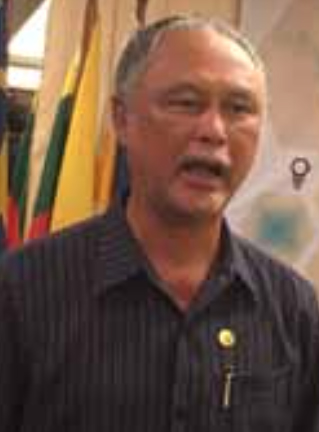Laos expects it will be able to export electricity to Singapore by 2020 as its officials are speeding up talks with the countries involved.
Deputy Minister of Energy and Mines, Mr. Viraphonh Viravong told Vientiane Times last week that talks were ongoing on the project, in which Laos expects to export 100 MW of power to Singapore via Thailand and Malaysia’s network.
“We recognise the benefits from the ASEAN power grid – the benefit that would be brought to all countries involved,” he said.
“It is only 100 MW. It is a small quantity, but we want to show it is possible using the existing facilities. Between 2018 and 2020 we hope to be able to trade with Singapore.”
He added that officials of the countries involved needed to work together and complete the legal, technical and commercial aspects of the pilot project.
Laos, which has already exported electricity to its neighbouring countries, is looking at exporting power to Singapore due to high energy prices there.
It was reported previously that Laos exported electricity at a unit price of just over 7 US cents per kwh to Thailand and just over 6 US cents per kwh to Vietnam and Cambodia, while the unit price in Singapore was about 20 US cents per kwh.
The deputy minister spoke to Vientiane Times during his attendance to the 5th ERIA (Economic Research Institute for Asean and East Asia) Editors’ Roundtable under the theme “Turning Vision into Reality for a Dynamic Asean Community” held last week in Vientiane.
Mr. Viraphonh told the meeting that Asean energy ministers had engaged in talks seeking ways to address common challenges by ensuring energy security, making the power more affordable and ensuring the sustainability of the sector.
To make energy, specifically electricity more affordable, the minister noted there were two key ways of doing so – the development of larger scale hydroelectricity plants and ensuring the interconnectivity of the energy network.
In the context of Laos, Mr. Viraphonh gave the example of the 1,000 MW Nam Theun 2 Hydropower Project, the construction of which was completed a few years ago. Power from Nam Thuen 2 is sold locally at about two and a half US cents per kilowatt hour instead of about six US cents per kilowatt hour if a smaller-scale hydropower plant is developed instead.
Power interconnectivity with neighbours has proven to be the most cost effective method for reducing energy costs. For instance, Laos has exported energy to Thailand, but imports power back for domestic use in some localities which are far away from the existing Lao power grid. This is because the investment for installing long- line networks to every remote community in Laos would not be cost effective compared to making use of the networks of neighbours.
The deputy minister added that energy cooperation among countries in the region was crucial given that Laos had high potential for electricity development, thus power imported from Laos would help its neighbours to lessen dependence on dirtier-sourced energy such as coal-fired power.
Some 12,500 MW of hydropower from Laos would prevent 30-60 tonnes of carbon dioxide being emitted annually, according to him.
According to plans, Laos is expected to develop 10,000 MW of electricity by 2020 and this will rise further to 20,000 MW by 2030, which will be much in excess of domestic demand.
Source: Vientiane Times



